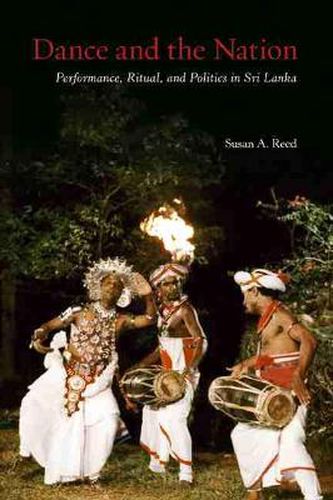Readings Newsletter
Become a Readings Member to make your shopping experience even easier.
Sign in or sign up for free!
You’re not far away from qualifying for FREE standard shipping within Australia
You’ve qualified for FREE standard shipping within Australia
The cart is loading…






Around the globe, dances that originate in village, temple, and court rituals have been adapted and transformed to carry secular meanings and serve new national purposes. In stage performances, dance competitions, and festivals worldwide, dance has become an emblem of ethnicity and an index of national identity. But what are the ‘backstage’ stories of those dances and what have been the consequences for their communities of origin? In
Dance and the Nation , Susan A. Reed brings to light the complexities of aesthetic politics in an exploration and analysis of Kandyan dance in Sri Lanka. As the national dance of Sri Lanka, Kandyan dance is identified with the majority Sinhala ethnic group and heavily supported by the state. Derived from an elaborate village ritual performed by men of the hereditary drummer caste, the dance was adopted by the state as a symbol of traditional Sinhala culture in the post-independence period and opened to individuals of all castes. Reed’s evocative account traces the history and consequences of this transition from ritual to stage, situating the dance in relation to postcolonial nationalism and ethnic politics and emphasizing the voices and perspectives of the hereditary dancers and of women performers.
$9.00 standard shipping within Australia
FREE standard shipping within Australia for orders over $100.00
Express & International shipping calculated at checkout
Around the globe, dances that originate in village, temple, and court rituals have been adapted and transformed to carry secular meanings and serve new national purposes. In stage performances, dance competitions, and festivals worldwide, dance has become an emblem of ethnicity and an index of national identity. But what are the ‘backstage’ stories of those dances and what have been the consequences for their communities of origin? In
Dance and the Nation , Susan A. Reed brings to light the complexities of aesthetic politics in an exploration and analysis of Kandyan dance in Sri Lanka. As the national dance of Sri Lanka, Kandyan dance is identified with the majority Sinhala ethnic group and heavily supported by the state. Derived from an elaborate village ritual performed by men of the hereditary drummer caste, the dance was adopted by the state as a symbol of traditional Sinhala culture in the post-independence period and opened to individuals of all castes. Reed’s evocative account traces the history and consequences of this transition from ritual to stage, situating the dance in relation to postcolonial nationalism and ethnic politics and emphasizing the voices and perspectives of the hereditary dancers and of women performers.